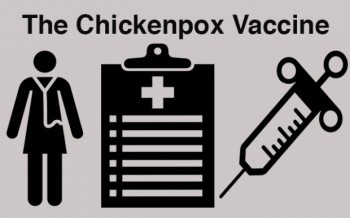- Home
- Editorial
- News
- Practice Guidelines
- Anesthesiology Guidelines
- Cancer Guidelines
- Cardiac Sciences Guidelines
- Critical Care Guidelines
- Dentistry Guidelines
- Dermatology Guidelines
- Diabetes and Endo Guidelines
- Diagnostics Guidelines
- ENT Guidelines
- Featured Practice Guidelines
- Gastroenterology Guidelines
- Geriatrics Guidelines
- Medicine Guidelines
- Nephrology Guidelines
- Neurosciences Guidelines
- Obs and Gynae Guidelines
- Ophthalmology Guidelines
- Orthopaedics Guidelines
- Paediatrics Guidelines
- Psychiatry Guidelines
- Pulmonology Guidelines
- Radiology Guidelines
- Surgery Guidelines
- Urology Guidelines
Chickenpox vaccine cuts risk of herpes zoster by 78% in children

Vaccination of children with chickenpox vaccine (varicella) cuts the risk of pediatric herpes zoster (HZ) or shingles, finds a study published in the journal Pediatrics. The study found that the incidence of HZ was 78% lower in vaccinated children than in unvaccinated children.
The study found that approximately 50% of the children were vaccinated for some or all of the study period when it looked at the electronic health records of more than 6.3 million children between 2003 and 2014, using data from 6 integrated health care organizations.
The study looked at the electronic health records of more than 6.3 million children between 2003 and 2014, using data from 6 integrated health care organizations. Approximately 50% of the children were vaccinated for some or all of the study period. Researchers found that, overall, HZ risk is much lower in vaccinated than unvaccinated children.
"We looked at the incidence rates of HZ overall, at how many cases there were per 100,000 person-years, including by age and gender," noted Weinmann. Person-years refers to the type of measurement that takes into account both the number of children who were included in the HZ study and the amount of time each child spent in the study over its 12-year course. "We saw the highest rates of HZ in the early years of the study when there was a higher proportion of children, particularly older children, who had not received the varicella vaccine."
The study specifically concluded the following:
- Over the 12-year period of the study, the rate of pediatric HZ declined by 72% overall as the number of vaccinated children rose.
- Incidence of HZ was 78% lower in vaccinated children than in unvaccinated children.
- Rates for immunosuppressed children, who were unable to receive the vaccination, were 5- to 6-times higher than for those who were not immunosuppressed.
Pediatric HZ is a rare disease, and the symptoms are usually milder for children compared with adults, who typically report a painful, burning, and blistering skin rash. Herpes zoster is an infection that results when the varicella-zoster virus reactivates from its latent state in a posterior dorsal root ganglion. Symptoms usually begin with pain along the affected dermatome, followed in 2 to 3 days by a vesicular eruption that is usually diagnostic.
"Since the introduction of the chickenpox vaccine, we have known how effective it is in preventing children from contracting that itchy and painful disease, but we set out to determine if the vaccine would also reduce risk of herpes zoster," explained lead investigator Sheila Weinmann, Ph.D. "Our findings demonstrate that the vaccine does reduce the likelihood of shingles in kids, highlighting the dual benefits of the chickenpox vaccine."
The rate of HZ among children who were unvaccinated climbed from 2003 to 2007 and then declined sharply through the end of the study period. Increasing rates of vaccination over the study period reduced the risk of contracting HZ overall for all children, including those who were unvaccinated. The decline could also have been related to the introduction of the second vaccine dose beginning in 2007, as HZ incidence was much lower in those children who received the 2-dose vaccinations rather than 1-dose vaccination.

Disclaimer: This site is primarily intended for healthcare professionals. Any content/information on this website does not replace the advice of medical and/or health professionals and should not be construed as medical/diagnostic advice/endorsement or prescription. Use of this site is subject to our terms of use, privacy policy, advertisement policy. © 2020 Minerva Medical Treatment Pvt Ltd